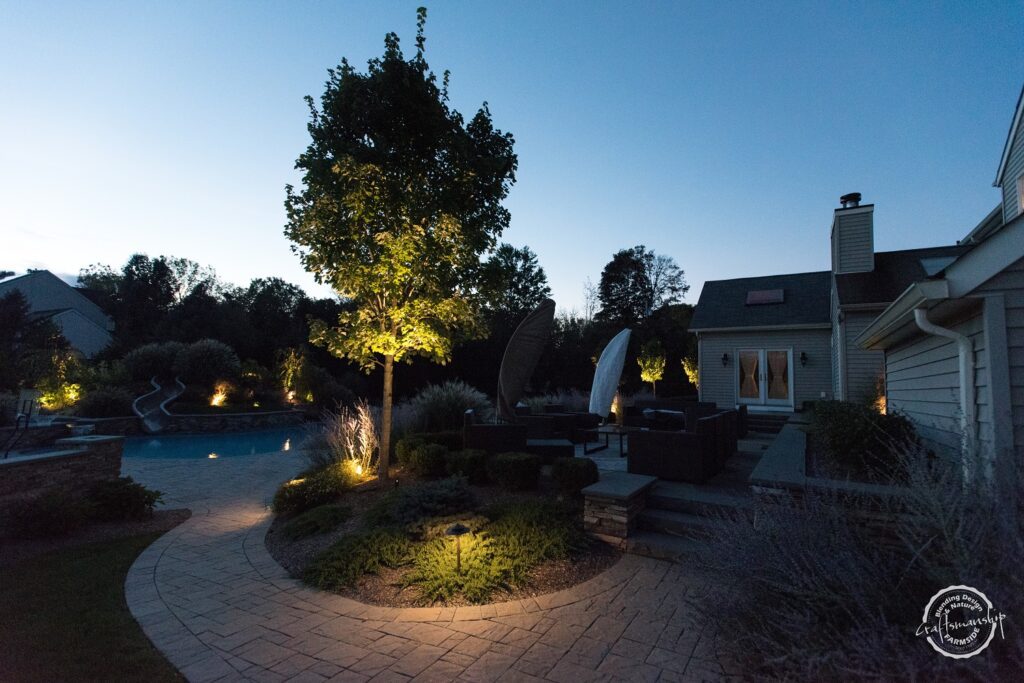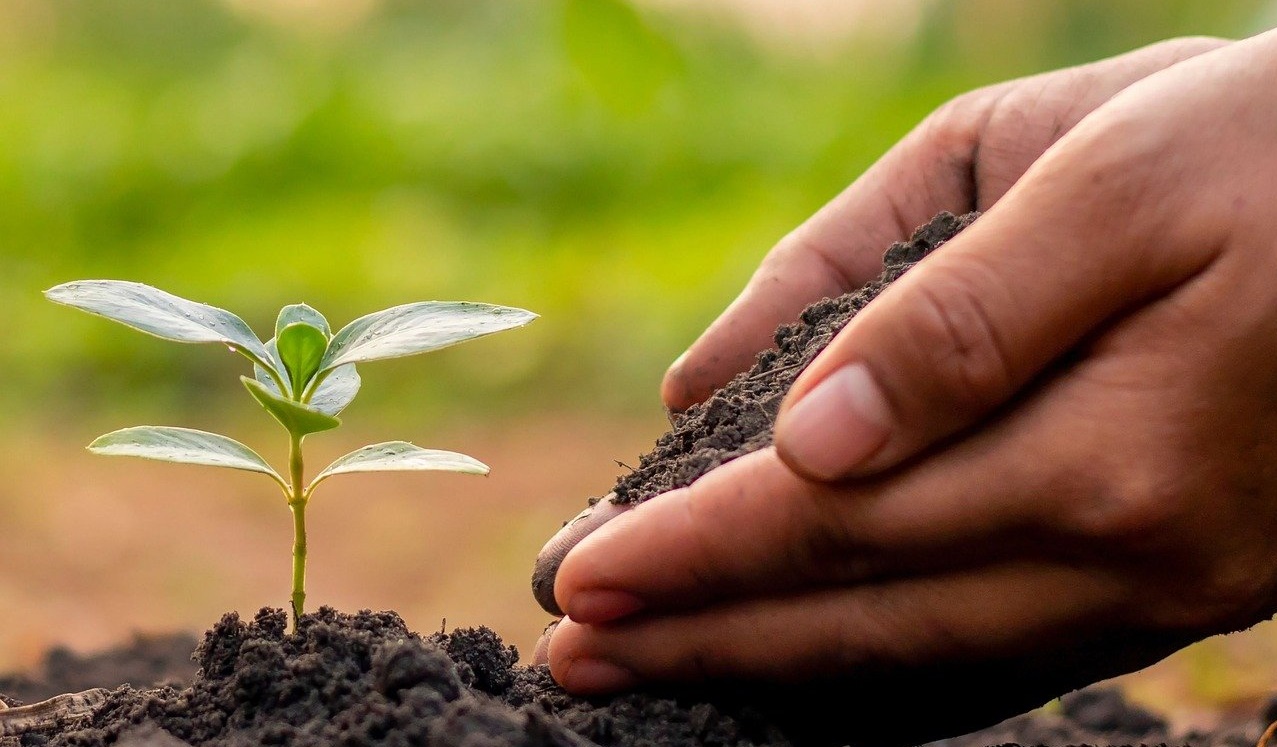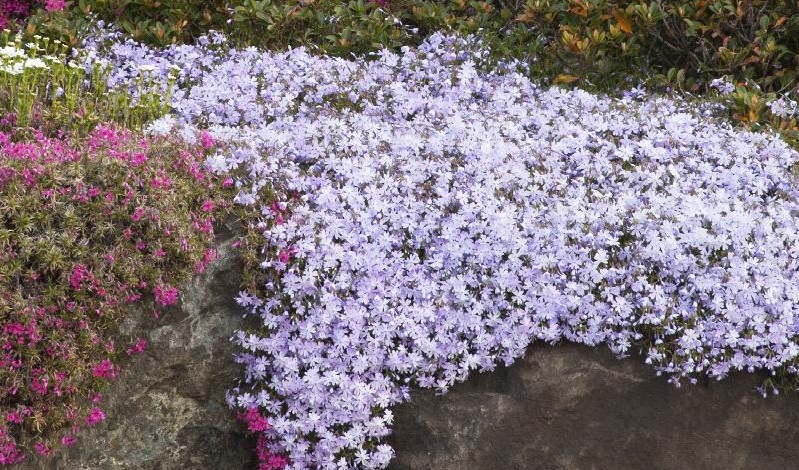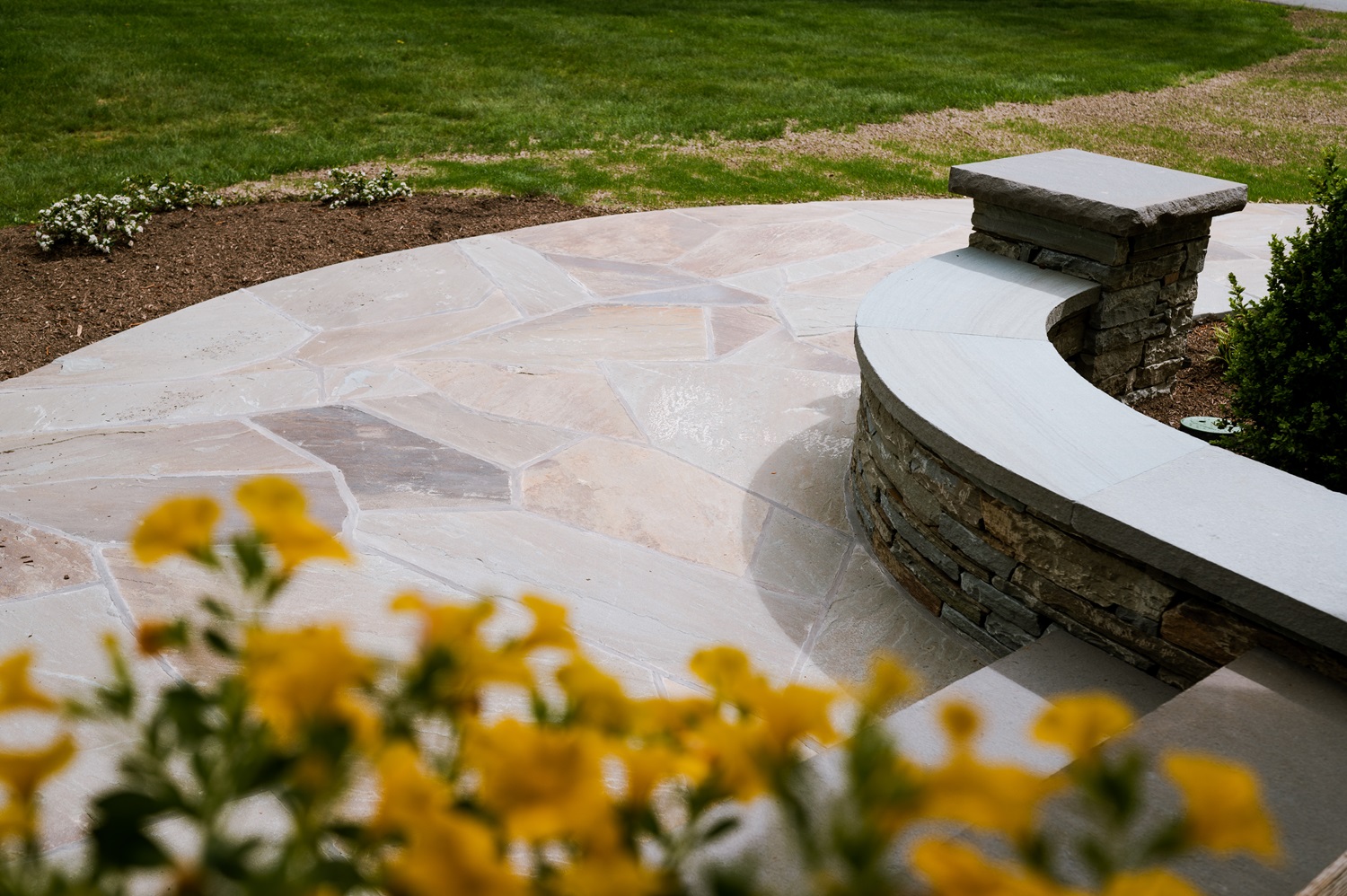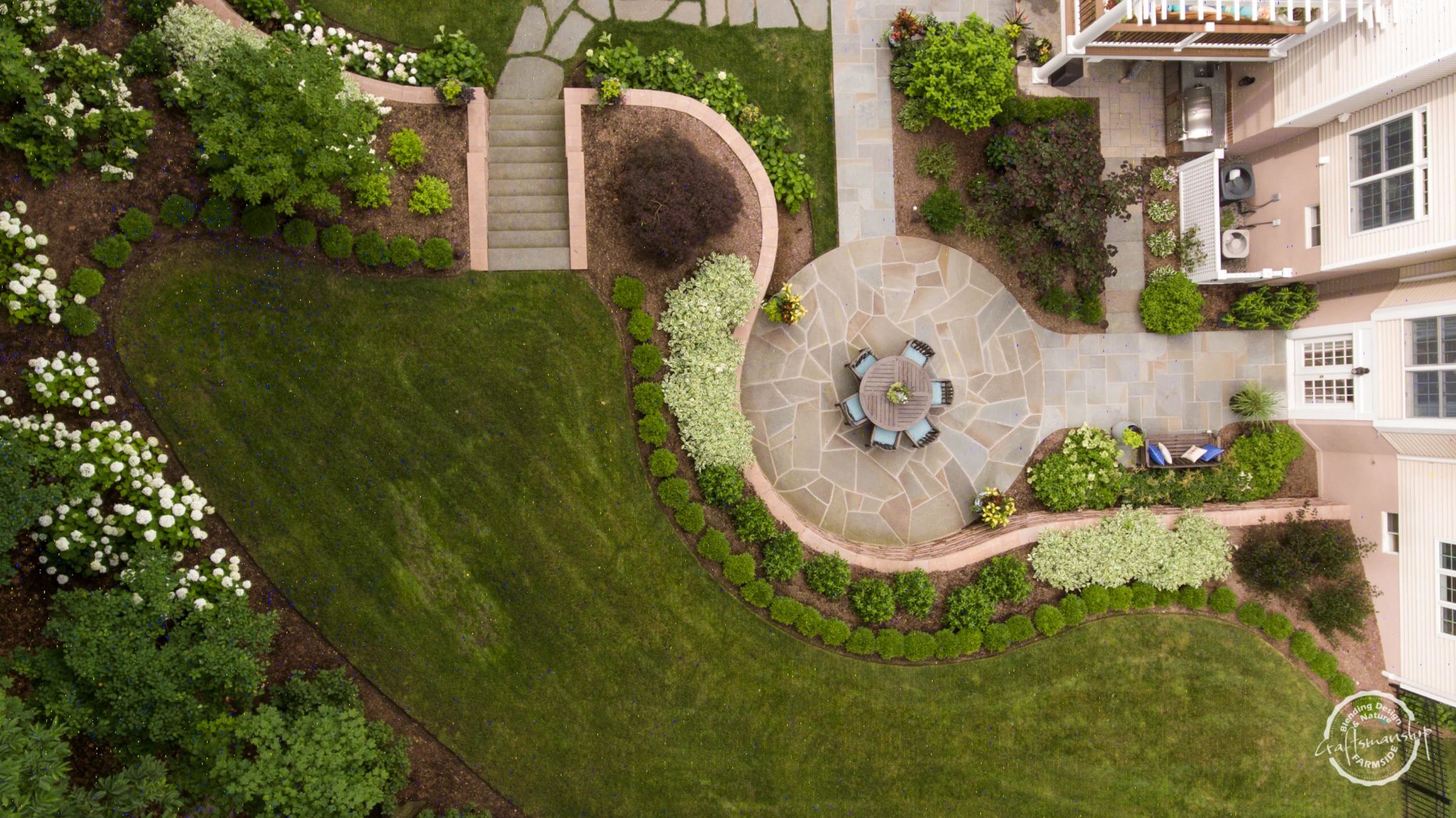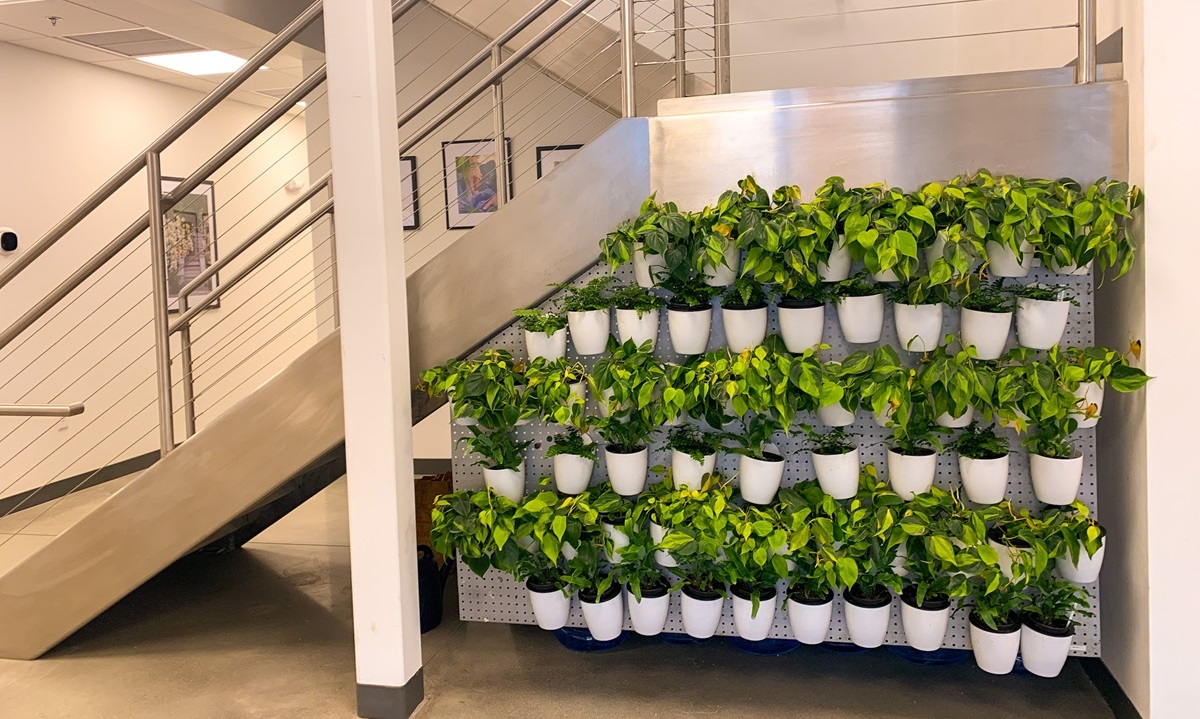(Scroll to the end for an inspirational photo gallery!) Including lighting in your landscape can add beauty and drama to your plantings, as well as another dimension of aesthetic enjoyment to your evenings. The focus on outdoor lighting is in its effects – the source of lighting itself, should remain obscure. The exception to this “rule” is pathway lighting, where you have a wide variety of choices that add both light and style.
Lighting your landscape helps create a mood, with even a few well-placed lights making a stunning statement. Think about what you’d like to highlight – maybe a beautiful tree or water features such as ponds or fountains. Don’t overlook elements like stone walls that can take on a truly dramatic flair at night when properly lit. Also, be sure your plans include lighting for safety and function. Entryways, stairs, walkways, patios, and decks all need illumination.
Where to begin? Get a big, bright flashlight (or two or three!) and start playing outside at night with light. The closer and more concentrated the light is focused, the more dramatic the light and shadows will be. A wider band of light that’s further away from the object it’s directed towards will be softer and more diffused. Try lighting things from above (downlighting) and below (uplighting) to get a sense of how light direction impacts the places you’re thinking of highlighting.
Lighting Lingo: Kelvins, Lumens and Watts
A quick breakdown:
Kelvin (indicated by K) is used to describe the color temperature (not the heat output) of the light source (warm/red/yellow or cool/blue/white). The higher the Kelvin number, the cooler the light temperature. An ideal color temperature for outdoor lighting is 2700K. This emits a warm, fire-like glow. For reference:
- 2700K-3000K – soft/warm
- 3500K-4100K – bright white/cool white
- 5000K-6500K – daylight
Lumens (used with LED lighting) is a measurement of total light output where Watts (used with incandescent lighting) is an actual measurement of power consumption. To have a relative comparative measurement:
- A 75W equivalent for an LED bulb would emit about 1100 lumens (60W-75W is ideal for outdoor lighting)
- For a 60W, about 800 lumens
- For a 40W, about 450 lumens
Uplighting and Downlighting
As each name suggests, this refers to the direction in which the light is shone. While uplighting helps emphasize architectural details in plantings and structures, downlighting is very effective in highlighting low gardens, showcasing the shape of plantings and creating a moonlight effect. These effects are created by the use of spotlights, floodlights (which have a wider range than spotlights), well-lights (in-ground lights) and directional or bullet lights.
Tips to Create Impactful Landscape Lighting Effects
- Narrow, spindly trees get a dramatic boost with a well-light placed directly beneath them. The uplighting creates a warm glow, while highlighting the intricacies of the tree.
- Aim a spotlight up the trunk of a large, bushy tree to showcase the tree bark, overall tree shape and foliage detail.
- For a moonlit glow, with large trees, you can place the light source high up in the trees aimed downward, so the light cast is like that of the glow of a beautiful full moon.
- A technique called silhouetting is great for highlighting plantings with dramatic shapes. The light source is placed behind the planting toward where the main vantage point will be so the structural shape is the key focus.
- If you have a yard with a lot of hardscaping, try a technique called grazing. Here, you place a light source close to the surface of a wall, directing the light either up or down for a dramatic play of shadow and light.
- Make sure your light source isn’t aimed towards windows to avoid reflective glare. Downlighting is a good option for highlighting plantings close to windows.
- If several trees are close together, select only one to highlight for greater design interest.
- For safety, a transformer is needed to reduce your home’s 120 volt current down to a safer 12 volts for setting up your outdoor lighting system.
Consulting with a professional before you start your lighting project is something we advise, and we’re here to help to you, from design ideas to safe set ups of systems. Contact us or call us here at Farmside today!

